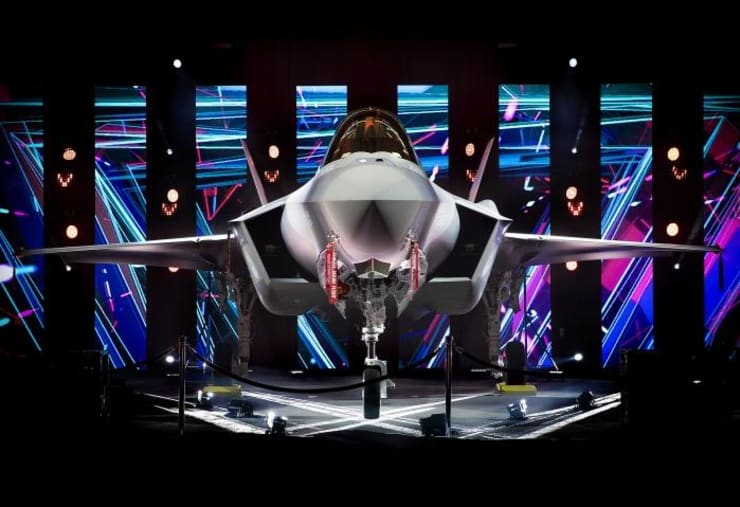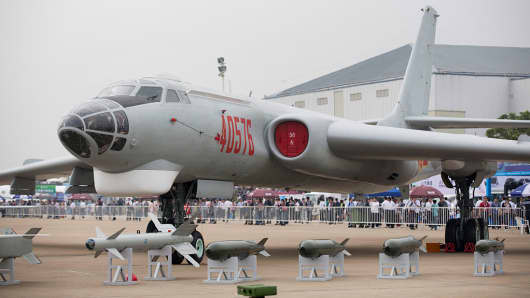By Aaron Mehta
WASHINGTON — For the second time in a week, the Pentagon’s top uniformed officer has taken a shot at Google, warning that the tech company’s investments in China are doing long-term damage to America’s security.
But Gen. Joseph Dunford, chairman of the Joint Chiefs of Staff, said he also plans to meet with the tech giant to debate about its roles and responsibilities as a commercial enterprise versus how much the firm owes to America as its home nation.
“In my judgment, Google assisting the Chinese military in advancing technologically is not in U.S. national interests, so it’s a debate we have to have,” Dunford said at a Thursday event hosted by the Atlantic Council.
His comments followed up on statements made in a Senate hearing last week, where he said Google was benefiting the Chinese military by its operations in the communist nation.
Asked to follow up on those conversations Thursday, the chairman expressed the belief that no company can do work in China without it being siphoned off.
“If a company does business in China, they are automatically going to be required to have a cell of the Communist Party in that company,” he said.
“If a company does business in China, they are automatically going to be required to have a cell of the Communist Party in that company,” he said.
“And that is going to lead to that intellectual property from that company finding its way to the Chinese military. It is a distinction without a difference between the Chinese Communist Party, the government and the Chinese military.”
“Ventures to help develop artificial intelligence in China are going to do two things. They are going to help an authoritarian government to assert control [over] its own population. Again, our country exists for the individual. China exists for the Chinese communist party,” he continued.
“The second thing it’s going to do is it’s going to enable the Chinese military to take advantage of the technology that is developed in the United States. Why is it developed in the United States? Why is Silicon Valley in the United States? Because of our system of government in enabling of individual ideas to bubble up and advance the world, whether it’s medically, education, artificial intelligence, you name it.”
“Ventures to help develop artificial intelligence in China are going to do two things. They are going to help an authoritarian government to assert control [over] its own population. Again, our country exists for the individual. China exists for the Chinese communist party,” he continued.
“The second thing it’s going to do is it’s going to enable the Chinese military to take advantage of the technology that is developed in the United States. Why is it developed in the United States? Why is Silicon Valley in the United States? Because of our system of government in enabling of individual ideas to bubble up and advance the world, whether it’s medically, education, artificial intelligence, you name it.”
Dunford added that he has plans to meet with Google executives in the near future, likely next week.
“I just think we need to have a debate about that. We ought not to think that it is just about business when we do business in China,” he said.
“I just think we need to have a debate about that. We ought not to think that it is just about business when we do business in China,” he said.
“This is about us looking at the second- and third-order effects of our business ventures in China, the Chinese form of government, and the impact it’s going to have on the United States’ ability to maintain a competitive military advantage and all that goes into it.
“I’m happy to have that debate. This is not about me and Google.”
The issue Dunford identifies is indeed wider than Google, with China a prime target for just about every major American industrial concern.
“I’m happy to have that debate. This is not about me and Google.”
The issue Dunford identifies is indeed wider than Google, with China a prime target for just about every major American industrial concern.
His comments also come from a situation where members of the tech and defense communities appear to often talk past each other and regard the other with suspicion.
That said, Google is an easy target inside the Pentagon.
That said, Google is an easy target inside the Pentagon.
Not only did parts of the company revolt against working on the department’s Project Maven last year, leading to Google’s exit entirely from the program, but the company has opened a major AI center in China — despite statements from Eric Schmidt, then the head of parent company Alphabet, that the U.S. and China are in an AI arms race.
“In the case of Google they were highlighted because they have an artificial intelligence venture in China. I think it is a reasonable assertion, even in an open venue like this, to assert the benefit of that venture for artificial intelligence for China, one of many ventures of our companies that are there, indirectly benefits the Chinese military and creates a challenge for us to [maintain] a competitive advantage,” Dunford said.
It’s not just AI where China’s influence on the commercial sector is butting up against the Pentagon’s interests.
Asked about the potential risks of a Chinese-built 5G network, Dunford called it a “critical national security issue” that needs to be addressed not just in the U.S. but with allied nations.
“Our relationships rely on trust, and that trust, in part, is the assurance that the data that we exchange, the intelligence we share, the information we share can be done in a way where it’s not compromised. And the issue of 5G addresses both potential vulnerabilities in our systems due to how reliant we will be on 5G for the internet of things, our combat systems, but also exchanging information with our allies and partners,” he said.
"So we very much believe that any future capability along the lines of 5G has to be trusted, and we’re concerned that we’re moving in the direction where if we don’t get out in front in that regard we won’t be able to trust 5G and will be at a competitive disadvantage,” the chairman concluded.
“In the case of Google they were highlighted because they have an artificial intelligence venture in China. I think it is a reasonable assertion, even in an open venue like this, to assert the benefit of that venture for artificial intelligence for China, one of many ventures of our companies that are there, indirectly benefits the Chinese military and creates a challenge for us to [maintain] a competitive advantage,” Dunford said.
It’s not just AI where China’s influence on the commercial sector is butting up against the Pentagon’s interests.
Asked about the potential risks of a Chinese-built 5G network, Dunford called it a “critical national security issue” that needs to be addressed not just in the U.S. but with allied nations.
“Our relationships rely on trust, and that trust, in part, is the assurance that the data that we exchange, the intelligence we share, the information we share can be done in a way where it’s not compromised. And the issue of 5G addresses both potential vulnerabilities in our systems due to how reliant we will be on 5G for the internet of things, our combat systems, but also exchanging information with our allies and partners,” he said.
"So we very much believe that any future capability along the lines of 5G has to be trusted, and we’re concerned that we’re moving in the direction where if we don’t get out in front in that regard we won’t be able to trust 5G and will be at a competitive disadvantage,” the chairman concluded.
“I think American industry needs to step out and dominate 5G because it will be in our national interest to do so.”
 It is safe to say that the Pentagon and Google are very different places. But that gap could harm U.S. national security.
It is safe to say that the Pentagon and Google are very different places. But that gap could harm U.S. national security. 




